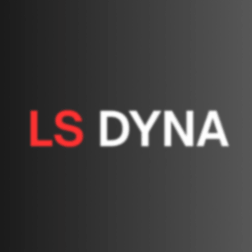About This Course
Course Curriculum
-
Introduction to LS-DYNA
readWhat is LS-DYNA? Real-world crash and impact applications Introduction to Explicit Solver workflow LS-DYNA input file structure (.k, .dyn, .d3plot, etc.) Running your first simulation in LS-PrePost
-
Model Setup and Units
readBlock impact setup with rigid wall Units in LS-DYNA: mm, ms, kg - maintaining consistency Key control cards: time step, termination, energy Managing model directories and input files
-
Material Models for Crash
readOverview of material cards: MAT_24, MAT_89, MAT_98 Plasticity and strain-rate dependent behavior Basics of failure modeling Using test data to define material curves
-
Meshing and Element Strategy
readShell vs solid elements -use cases and benefits Choosing between quad, hex, and tet elements Mesh quality checks: aspect ratio, skew, warpage Mesh setup for crash-prone components
-
Contact and Assembly Modeling
readContact definitions: automatic surface, tied, node-to-surface Spotweld simulation: CONSTRAINED_SPOTWELD basics Debugging contact issues: penetration, instability Multi-part assembly setup (e.g., crush can + frame)
-
Crash & Impact Case Study - Crush Can
readModeling a crush can under axial impact Velocity input, rigid wall, boundary condition setup Observing folding and progressive deformation Plotting force-displacement curve and energy absorption
-
Simulation Project
readProject: Rear Underrun Protection Device (RUPD) Crash Simulation Modeling of truck rear frame + RUPD structure Rigid wall setup and prescribed velocity input Contact definition and simulation run Postprocess force-time graph and deformation zones
-
Postprocessing & Final Review
readD3PLOT, RCFORC, NODOUT - reading and interpreting outputs Energy balance: kinetic vs internal vs total Plotting stress, intrusion, and acceleration graphs Final Review: Combine RUPD + Crush Can for evaluation report




